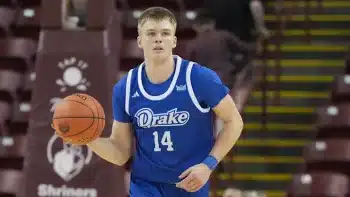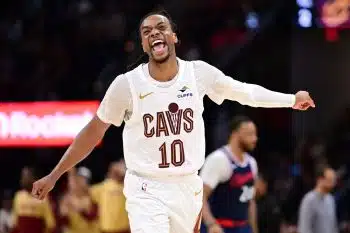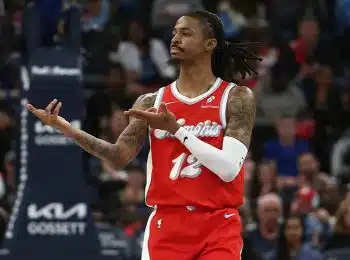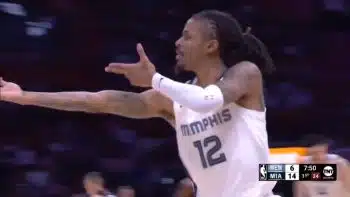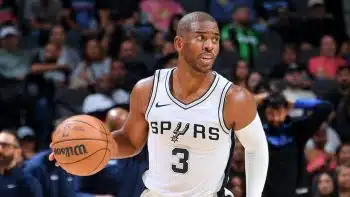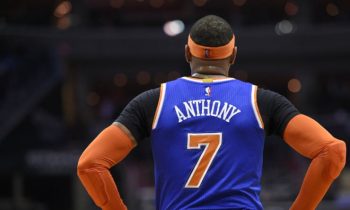NBA
NBA AM: Timing is Crucial for Trade Kickers
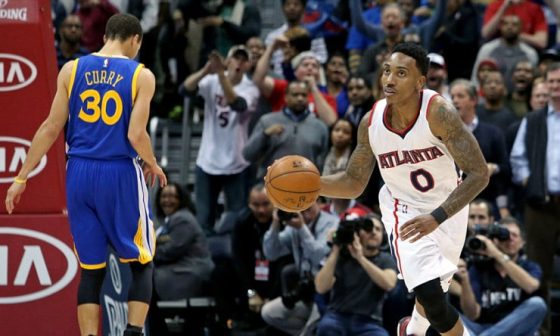
A number of NBA players have trade kickers in their contracts – bonuses up to 15 percent of the players’ remaining salary.
Timing, however, is crucial in determining whether or not a kicker actually kicks. When a player is traded with a bonus, the additional salary is averaged out over his contract, excluding any player or team option years.
For instance, Atlanta Hawks guard Jeff Teague is due $800,000 if he’s traded. Dealt before July, Teague’s salary would actually jump to $8.4 million for both the completed 2015-16 season and the 2016-17 campaign.
That’s a significant caveat; even if a trade happens as late as June, the player’s salary for the previous season, on paper, is impacted by the bonus.
Should Atlanta move Teague next season, which officially starts in July, the entire bonus will raise his 2016-17 salary to $8.8 million.
The complication rises when a player is already getting paid a maximum salary for the current season.
Memphis Grizzlies center Marc Gasol, earning the maximum of $19.7 million for a player with seven years of experience, cannot go over that number with a kicker. Traded in June, Gasol would get no bonus at all; dealt in July, the Grizzlies would be on hook for $10.2 million.
While Memphis may have no interest in trading the former Defensive Player of the Year, if they do, a deal in June makes a lot more sense economically than it would in July.
Once the NBA’s year rolls over to 2016-17, Gasol’s salary climbs to $21.2 million, short of the projected $25.9 million, mid-tier maximum. The incoming team wouldn’t be responsible for paying his bonus, but Gasol’s salary cap number would climb by $3.4 million for each of the next three seasons.
A bonus wouldn’t impact Gasol’s final player option year of $25.6 million for the 2019-20 season.
Other players who “should” be dealt in June rather than July include Blake Griffin of the Los Angeles Clippers, Carmelo Anthony of the New York Knicks (who also has a no-trade clause) and both Derrick Rose and Jimmy Butler of the Chicago Bulls among others. Of course, the listed teams may have no interest in parting with their respective players.
Gordon Hayward of the Utah Jazz is an interesting case in that he is eligible for some of his bonus as a non-max player. In June, he could receive a $2 million bonus, upping his salary by roughly $1 million for both last and next season. In July, he would be eligible for the full $2.4 million, which would apply entirely on his 2016-17 cap figure.
Both the salaries of Vince Carter (Grizzlies) and Butler have slightly different formulas because of Carter’s partially-guaranteed salary and Butler’s signing bonus.
Another quirk in calculating trade bonuses is that a player can optionally waive their bonus – but only if the math is specifically limiting. Last summer, the Los Angeles Lakers wisely used their cap room so there was only room to give Hibbert $78,185 instead of $2.3 million.
Hibbert had to willingly approve the trade from the Indiana Pacers, without his full 15 percent bonus.
With most franchises flush with spending power in July, with the salary cap jumping from $70 million to a projected $92 million, teams may find it difficult to creatively limit a players’ potential trade bonus.
In terms of salary matching, the team trading away a player with a bonus uses the original salary — while the incoming team needs to make room to acquire the player after the bonus is applied.
The following table lists players with potential trade bonuses. Teague’s $800,000 would apply to two seasons, indicated by “x 2” – including the 2015-16 year. Butler’s $877,610 would apply to three seasons (“x 3”):
| Player | Team | Bonus | Before July |
After June |
|---|---|---|---|---|
| Jeff Teague | Atlanta Hawks | 10% – $800,000 | $400,000 x 2 | $800,000 |
| Thaddeus Young | Brooklyn Nets | 15% – $3.75 mil | $1.25 mil x 3 | $1.88 mil x 2 |
| Bojan Bogdanovic | Brooklyn Nets | 15% – $535,953 | $267,977 x 2 | $535,953 |
| Jimmy Butler | Chicago Bulls | 5% – $2.6 mil | $0 | $877,610 x 3 |
| Derrick Rose | Chicago Bulls | 15% – $3.2 mil | $0 | $3.2 mil |
| Nikola Mirotic | Chicago Bulls | 15% – $867,368 | $433,684 x 2 | $867,368 |
| Kyrie Irving | Cleveland Cavaliers | 15% – $8.5 mil | $0 | $2.8 mil x 3 |
| Danilo Gallinari | Denver Nuggets | 15% – $2.3 mil | $1.1 mil x 2 | $2.3 mil |
| Andre Iguodala | Golden State Warriors | 15% – $1.7 mil | $834,853 x 2 | $1.7 mil |
| Blake Griffin | Los Angeles Clippers | 15% – $5.8 mil | $0 | $5.8 mil x 1 |
| Chris Paul | Los Angeles Clippers | 15% – $7.1 mil | $0 | $7.1 mil x 1 |
| DeAndre Jordan | Los Angeles Clippers | 15% – $6.6 mil | $0 | $3.3 mil x 2 |
| J.J. Redick | Los Angeles Clippers | 5% – $368,875 | $184,438 x 2 | $368,875 |
| Marc Gasol | Memphis Grizzlies | 15% – $10.2 mil | $0 | $3.4 mil x 3 |
| Vince Carter | Memphis Grizzlies | 15% – $639,609 | $435,393; $204,216 | $639,609 |
| Brandan Wright | Memphis Grizzlies | 15% – $1.7 mil | $583,282 x 3 | $874,923 x 2 |
| Tyreke Evans | New Orleans Pelicans | $1.0 mil | $500 x 2 | $1.0 mil |
| Carmelo Anthony | New York Knicks | 15% – $11.8 mil | $0 | $3.9 mil x 3 |
| Enes Kanter | Oklahoma City Thunder | 15% – $5.3 mil | $0 | $2.6 mil x 2 |
| Kawhi Leonard | San Antonio Spurs | 15% – $8.5 mil | $0 | $2.8 mil x 3 |
| LaMarcus Aldridge | San Antonio Spurs | 15% – $6.3 mil | $0 | $3.2 mil x 2 |
| Gordon Hayward | Utah Jazz | 15% – $2.4 mil | $997,930 x 2 | $2.4 mil |
Note: Both Paul and Griffin have early termination options (ETO) on their final seasons, which are included in trade bonus computations – unlike standard player options. The application of their bonuses would fall entirely on their 2016-17 salary, not on their ETO years (2017-18). Complicating matters further, Griffin’s full bonus of $6.2 million would put him over the projected second-tier maximum salary of $25.9 million, limiting his bonus to $5.8 million.
[6/25/16 — Revised to add Tyreke Evans to list]